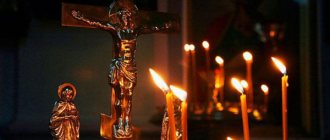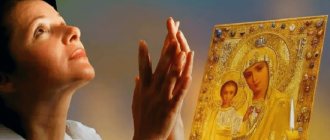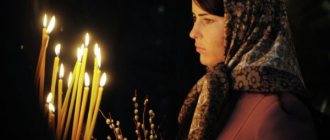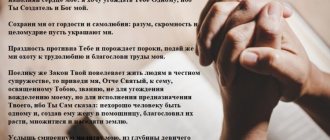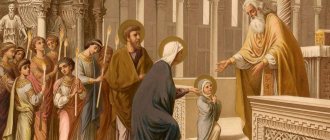Orthodoxy is unthinkable without icons. Today it seems to us that it has always been this way. However, in the history of Orthodoxy there was a difficult period of iconoclasm . For a century and a half, during the 8th - 9th centuries, a dispute lasted between the Byzantine emperors about the possibility of iconographic depictions of Jesus Christ, the Mother of God, and saints. The dispute took the form of brutal persecution and murder of those who venerated the icons. This dramatic period of church history ended with the Triumph of Orthodoxy , which Christians celebrate annually on the first Sunday of Lent. The origin of the celebration is connected with the events of the Council of Constantinople in 843, convened by Empress Theodora to restore icon veneration in the Byzantine Empire.
History of the Feast of the Triumph of Orthodoxy
The beginning of the era of iconoclasm is considered to be the year 730, when Emperor Leo III the Isaurian (717-741) issued a law prohibiting the worship of icons. His son and successor Constantine V Copronymus (that is, the namesake of pus, dung, feces - this is how supporters of icon veneration called him) convened an iconoclastic council in 754. Mosaics, frescoes, and icons in Byzantium were destroyed. Many icon venerators were persecuted. Sacred images were compared to idols, and the veneration of icons was compared to idolatry, referring to the second Old Testament commandment:
You shall not make for yourself an idol... (Ex. 20: 4-5).
Iconoclasm spread throughout Byzantium without affecting the Western Church. The Roman popes, turning to the Byzantine emperors, condemned iconoclasm. The future Christian saint, theologian John of Damascus (c. 675-c. 753 (780)), criticized the iconoclasts in his works (in particular, “Three words of defense against those who condemn holy icons”).
After the death of the next emperor Leo IV the Khazar (75-780), his widow, Empress Irene (c. 752-803), co-ruler of her son Constantine VI (771-797/805), convened in 786-787 a new church council, which entered the history of the Church as the Seventh Ecumenical Council .
St. Queen Irene with her son Constantine at the Seventh Ecumenical Council. Fresco of Dionysius, 15th century
This cathedral restored the veneration of iconographic images. But the heresy of iconoclasm at this time was firmly rooted in the minds of people. Initially, the council was convened in Constantinople, but the meeting had to be postponed because soldiers of the capital's garrison - convinced iconoclasts - burst in. Later, the Council was nevertheless convened, but in a small city - Nicaea. Thus ended the first period of iconoclasm.
Seventh Ecumenical Council. Miniature of the Facial Chronicle of Ivan the Terrible
As mentioned above, the number of supporters of the iconoclastic heresy was considerable. After some time, an iconoclast again found himself on the Byzantine imperial throne. From this period began the second period of iconoclasm (814-842). The final restoration of the veneration of icons took place in 842 under Empress Theodora (815-867), widow of Emperor Theophilus (813-842) and regent for his young son Michael (840-867).
Queen Theodora with her son Michael. Miniature of the Facial Chronicle of Ivan the Terrible
More on the topic:
Original Facial Code of Ivan the Terrible in the Library of Russian Faith
The kingdom of Michael and Theodora, who established the worship of honest icons. Read online →
Empress Theodora and Patriarch Methodius, who replaced the iconoclast John VII, convened a council, at which all the decisions of the Seventh Ecumenical Council were confirmed. Those who fought against icons were excommunicated from the Church. The relics of saints who suffered during the iconoclastic years were solemnly brought to Constantinople, among them Theodore the Studite (759-826) and Patriarch Nikephoros of Constantinople (c. 758-828). At the same time, the Rite of the Triumph of Orthodoxy was compiled and celebrated for the first time - “Eternal memory” was proclaimed to all defenders of Orthodoxy, and “anathema” was proclaimed to heretics.
Church tradition says that Empress Theodora came from a family of icon worshipers. She continued to secretly worship holy images even in the imperial palace.
Theodora was a believer and Orthodox, like her husband when he was alive. She secretly venerated the holy icons and kissed them. Partly from herself, partly from the teachings of Theoctistus, the patrician, the caniclius and the logotheto, Queen Theodora ordered the expulsion from the church and from the city of Patriarch John (Grammar), the iconoclast, the chief of demons and magicians, and not the patriarch, and sent him into exile in one of the monasteries in the place , called Night... The Christian preacher Methodius is elevated to the patriarchal throne. Like placing a candle in a candlestick so that it drives away the heretical darkness. And those who were in exile and prisons, convening all the prayer books, ordered them to live in freedom ( Front Chronicle of Ivan the Terrible, World History, book 9 ).
Emperor Theophilus.
The chronicle of John Skylitzes, the Synaxarion, which is read during the evening service on the feast of the triumph of Orthodoxy, tells that Emperor Theophilus fell seriously ill at the end of his life. Then he realized that this was a punishment from the Lord for iconoclasm. The emperor repented, venerating the icon that one of the courtiers had, and soon reposed. After his death, Empress Theodora fervently prayed for the repose of her husband’s soul, asking the Lord to forgive the emperor’s sins. At that time, Patriarch Methodius prepared a list of names of fighters with icons in order to proclaim “anathema” to them during the service, and left it in the church. The next day he saw that the name of Emperor Theophilus had miraculously disappeared from the manuscript. This meant that the Lord forgave the ruler who repented before his death.
They came to the Great Church with crosses and holy images to restore its iconic beauty, and so that the new miracle that happened to King Theophilus would become known. And then everyone gathered with candles, and the queen came with her son Mikhail, and prayers were offered there for the strengthening of the true faith. The next morning, in the first week of holy fasting, the patriarch, and all the bishops, and priests, and the whole multitude of people came with holy icons, and with honorable crosses, and with holy gospels to the place called the Field, crying out: “Lord have mercy.” And they returned to the church again, and performed the divine service, proclaimed the divine memory to divine men and all pious people, cursed the wicked iconoclasts and all heretics, commanded and approved the worship and veneration of divine images, and granted the church its former beauty. And everyone was told about God’s new miracle. And the holy fathers decided to celebrate such a holiday in the first week of holy fasting for the glory of God. We still glorify and celebrate this cathedral, and perform it for the glorification of saints and honest icons, and for the curse of godless heretics ( Front Chronicle of Ivan the Terrible, World History, book 9 ).
Miniature of the Facial Chronicle of Ivan the Terrible
The rite of the triumph of Orthodoxy
By the 11th century, a special rite for the celebration of Orthodoxy , called the Ecumenical Synodikon . By the 14th century it was supplemented with texts containing Orthodox dogmas. The text of the service proclaims the triumph of the church over all existing heresies, and approves the decisions of the seven Ecumenical Councils.
The rite of the triumph of Orthodoxy from the book “Different ranks”, early 17th century. Collection of the Trinity-Sergius Lavra
In Rus', the rite of the triumph of Orthodoxy was known in the 11th century. Its origin is associated with the name of St. Theodosius of Pechersk, who introduced a ktitor’s charter in his monastery, modeled on the type of the Alekseevsky Monastery (one of the charters of the Studite group) in Constantinople. First, the names of deceased princes, saints, monks, and later the names of Russian heretics were added to it. The rank was subject to changes more than once; its handwritten lists differed from each other in different regions. The first printed edition was published in Ukraine (as part of the Polish-Lithuanian Commonwealth) in 1627 as part of the Lenten Triodion under the famous church and cultural figure Archimandrite Zechariah Kopystensky (second half of the 16th century - 1627).
In the Lenten Triodion, printed in Moscow in 1650, there is no indication of the celebration of the Rite of the Triumph of Orthodoxy
In 1656, Patriarch Nikon included the Ecumenical Synodik into the Lenten Triodion, while slightly changing the Kiev text.
In the Lenten Triodion, published under Patriarch Nikon in 1656, the Order of the Triumph of Orthodoxy is reprinted from the Triodion of the Kyiv edition of 1627
In 1801, the rank was reduced; it retained the listing of the names of heretics, and the names of state criminals included in the Synodik were significantly reduced. In 1869, the names of state criminals were removed from the text of the rank. By 1917, the rite included twelve general anathematisms without specifying specific names. During the Soviet period, it was customary not to proclaim anathema. In the 1990s of the 20th century, the proclamation of anathemas was permitted only at bishop's services. But for reasons of political correctness and to avoid religious conflicts, anathemas are not actually pronounced or are significantly reduced. Old Believers use liturgical books and the Charter of pre-schism publications. There is no Ecumenical Synodik in them, therefore the Old Believer service on the Week of the Triumph of Orthodoxy is performed in the usual manner, as on any other Sunday. It is known that at present the Rite of the Triumph of Orthodoxy is performed only in one Old Believer consensus, in the community of Spas-Klepiki (DCH BI).
Triumph of Orthodoxy. Divine service
The canon for the triumph of Orthodoxy was written by Theophan the Inscribed . In the 14th century, the church historian, monk of the St. Sophia Monastery in Constantinople, Nicephorus Callistus Xanthopoulos (d. c. 1350), wrote the Synaxarion on the Sunday of Orthodoxy. The Synaxarion briefly describes the history of iconoclasm and the repentance of Emperor Theophilus. The Synaxarion is included in the all-night vigil service on the Sunday of the Triumph of Orthodoxy and is read after the sixth hymn of the canon at Matins.
Troparion, tone 2:
We bow to the most holy image of God, simply forgiven our sins, for the sake of God, for the sake of 3si2 climbed to the top, and also saved and created 3si2 t work of the enemy . We are so grateful for the cry of ours, who have come to save our world.
Kontakion, tone 8:
The unwritten word is џ§еє, and 3 from you it was written with flesh, and 3 њvulshiisz џimage, in the 8 ancient beauty of the divine good mixture2. but we also imagine salvation in deed and word.
Library of the Russian Faith Canon on the Week of the Triumph of Orthodoxy →
Read online
WORSHIP: “We praise You, God”
A distinctive feature of the service on Sunday of the first week of Lent is the chanting of the Triumph of Orthodoxy. On Saturday evening the service is celebrated on Octoechos and the Lenten Triodion. At the all-night vigil, stichera are sung, in which Christ is glorified and icon veneration is glorified.
“Having passed from wickedness to piety and having been enlightened by the light of knowledge, let us applaud our hands according to the psalm, offering grateful praise to God, and on the walls, and boards, and sacred vessels inscribed with the sacred images of Christ, and the Most Pure One, and all the saints, we will worship with reverence, rejecting the ungodly and inglorious faith, - for the honor given to the image, as St. Basil says, passes to the prototype, - and asking, through the intercessions of Your Most Pure Mother, Christ our God, and all the saints, to grant us great mercy.”
Troparion of the holiday - troparion to the image of the Savior not made by hands.
“We worship Your most pure image, O Good One, asking forgiveness of our sins, O Christ our God. For You voluntarily deigned to ascend in flesh to the Cross in order to deliver those created by You from slavery to the enemy. Therefore, we gratefully cry out to You: “You have filled everything with joy, our Savior, who came to save the world!”
The canon of the holiday was written by Theophan the Inscribed, who himself suffered from the iconoclasts along with his brother Theodore.
In the morning, after the Divine Liturgy of St. Basil the Great, a special prayer service is served. Icons of Jesus Christ and the Mother of God are placed on the lectern, before which eternal memory is proclaimed to all defenders of the Orthodox faith and prayers are offered for the Church. In ancient times, various heresies were also anathematized there.
The words of the priest's prayer sound like this:
“Holy Trinity, glorify these and confirm them even to the end in their orthodoxy; convert and create those who turn away from the holy and saving Orthodox faith and the Church of Christ, so that they all may come to the knowledge of Thy eternal truth, through the prayers of our Most Holy Lady Theotokos and Ever-Virgin Mary and all the saints.” .
Triumph of Orthodoxy. Icons
The iconography of the triumph of Orthodoxy developed by the 14th - 15th centuries. A Byzantine icon (London, British Museum) of the 14th century is the earliest depiction of the triumph of Orthodoxy and the veneration of icons that has survived to our time.
Icon of the triumph of Orthodoxy. Modern icon
The icon of the triumph of Orthodoxy marks the end of the period of iconoclasm. In the center of the iconographic image is the icon of the Mother of God “Hodegetria”, which means “Showing the Way”. During the period of the struggle against icon veneration, when speaking about an icon, they meant the Image of the Savior, but by the 14th century, when the iconography of the triumph of Orthodoxy was taking shape, the icon of the Virgin Mary became the main icon of Byzantium. Speaking about the features of the iconographic depiction of the triumph of Orthodoxy, it is worth noting that the placement of the icon of the Mother of God on the throne recalls the prayer service before this icon, which was performed by the Patriarch of Constantinople Methodius (788/800 - 847), Empress Theodora, her son Michael and all Christian believers March 11 (first Sunday of Lent) 843 in the Church of Hagia Sophia. The prayer service ended with a religious procession through Constantinople, and believers returned the preserved icons to their places in churches.
The icon of the triumph of Orthodoxy is divided into two rows. At the top, to the left of the icon of the Mother of God, is the pious Empress Theodora with her son Michael.
Icon of the Triumph of Orthodoxy. Fragment: Empress Theodora and Emperor Michael III. Byzantium, first half of the 15th century
To the right of the Throne are St. Methodius and St. Theodore the Studite, abbot of the Studite Monastery, author of numerous works in defense of icon veneration. Even when he was imprisoned by the iconoclast emperor Leo the Armenian (813-820), he continued to advocate icon veneration in his letters.
In the bottom row of the icon, in the center, Saint Theophan the Sigrian Confessor (c. 760-818) and Stephen the New are depicted holding an icon of Christ. Theophan the Confessor was a participant in the Seventh Ecumenical Council. When iconoclasm resumed, he was sent into exile by Emperor Leo the Armenian, where he died in captivity. Stephen the New was a monk from Mount Auxentia, the mentor of all Constantinople monasticism; he urged not to succumb to the heresy of the iconoclasts, advising the weak to hide where there was no persecution. To the right of Theophan of Sigrian and Stephen the New is depicted Theophylact the Confessor, Bishop of Nicomedia, he participated in the negotiations between Leo the Armenian and the holy Patriarch Tarasius (c. 730 - 806), who tried to convince the emperor not to renew the iconoclastic heresy after the Seventh Ecumenical Council.
Next are two brothers, Theodore and Theophanes the Inscribed (second half of the 8th century - first half of the 9th century). The holy brothers received this name because, by order of Emperor Theophilus, offensive verses were burned on their faces with hot needles.
Theophanes and Theodore Inscribed
To the left of the Throne is the martyr Theodosia (8th century) holding the icon of Christ Emmanuel in her hands. Theodosia did not allow the soldier to throw down the copper image of Jesus Christ from the gates of Constantinople. For this, Theodosia was killed. Researchers were unable to identify the figures of monks between Feodosia and Feofan due to severely damaged inscriptions.
The bottom row depicts saints related to the protection of icons and icon veneration, who lived earlier, in the 8th century. Their exploits and labors are, as it were, the foundation of the triumph of Orthodoxy.
How did the icon still “win”?
The very question of the legality of icon veneration and, in general, the possibility of depicting God, was not clarified in Christianity for a very long time. Icon veneration often coexisted with iconoclasm, oddly enough. This paradox is associated with such features of the Old Testament, where it was said that any images of the Lord are prohibited as images of idols, but in the Tabernacle of the Covenant, and later in the Temple of Solomon, there were images of angels. It was these moments that became the beginning of a new teaching about the future veneration of icons.
The church was in this contradiction until the 8th century. It was then that the dual nature of God - human and divine - was accepted as dogma. The dogma of icon veneration was formed after the persecution of icon venerators began, as the influence of Muslims and Jews became strong, and in addition, icon veneration began to take on exaggerated forms, when icons were even called upon as witnesses in court. Emperor Leo the Isaurian decided to put an end to this absurdity, but too zealously took up the destruction of icons, first crushing the copper icon of Christ from the gates of Constantinople. The peak of iconoclasm was the council convened by the emperor’s son in 754, where iconoclasm received the status of an official teaching.
Iconoclasts argued that the worship of icons is unnatural by the fact that an icon is just wood and just paints, and not some image of God; it is an idol, which is prohibited by the Old Testament itself. The admirers of icons had arguments for this: in the icon itself there is no God and soul, since there is no body, but there is a divine image that they worship. To modern man, this nuance can be explained through the image of a photograph: the image on paper itself is not a person and does not contain a soul, but we keep photographs of loved ones and capture images of loved ones in them. So, a woman kissing a photo of her lover is not kissing paper and paints, but the image of the person himself, which she sees in this photograph. The same applies to the icon: we honor not the materials - wood and paints, but the image that we see on the icon.
The main and most important argument was the explanation of Theodore the Studite. He taught that it is the embodiment of the image of the Lord in the icon that is the only possibility of man’s unity with God. The words of the New Testament belonging to Christ become the dogma of the worship of icons: “He who has seen Me has seen the Father” (John 14:9). The icon in this case is not an image, not a drawing. It becomes a way of transmitting the inner, spiritual and secret.
Only the very first Christians, his disciples and contemporaries could see Christ, but then how can subsequent generations of Orthodox Christians see the Lord God through the image of Christ, if not through images on icons? By nature, man cannot unite with God, since human nature is sinful and unclean. For this unity, a certain incarnation of God is necessary, which the icon becomes. Through this incarnation, humanity touches the sacred and receives the opportunity of a new birth.
An icon is a kind of door to spiritual reality, which has its own special language, where each image and sign has its own sacred meaning. Initially, the icon was created as a kind of sacred encrypted text addressed to a believer; one must be able to read it correctly, which is quite difficult for a modern person.
